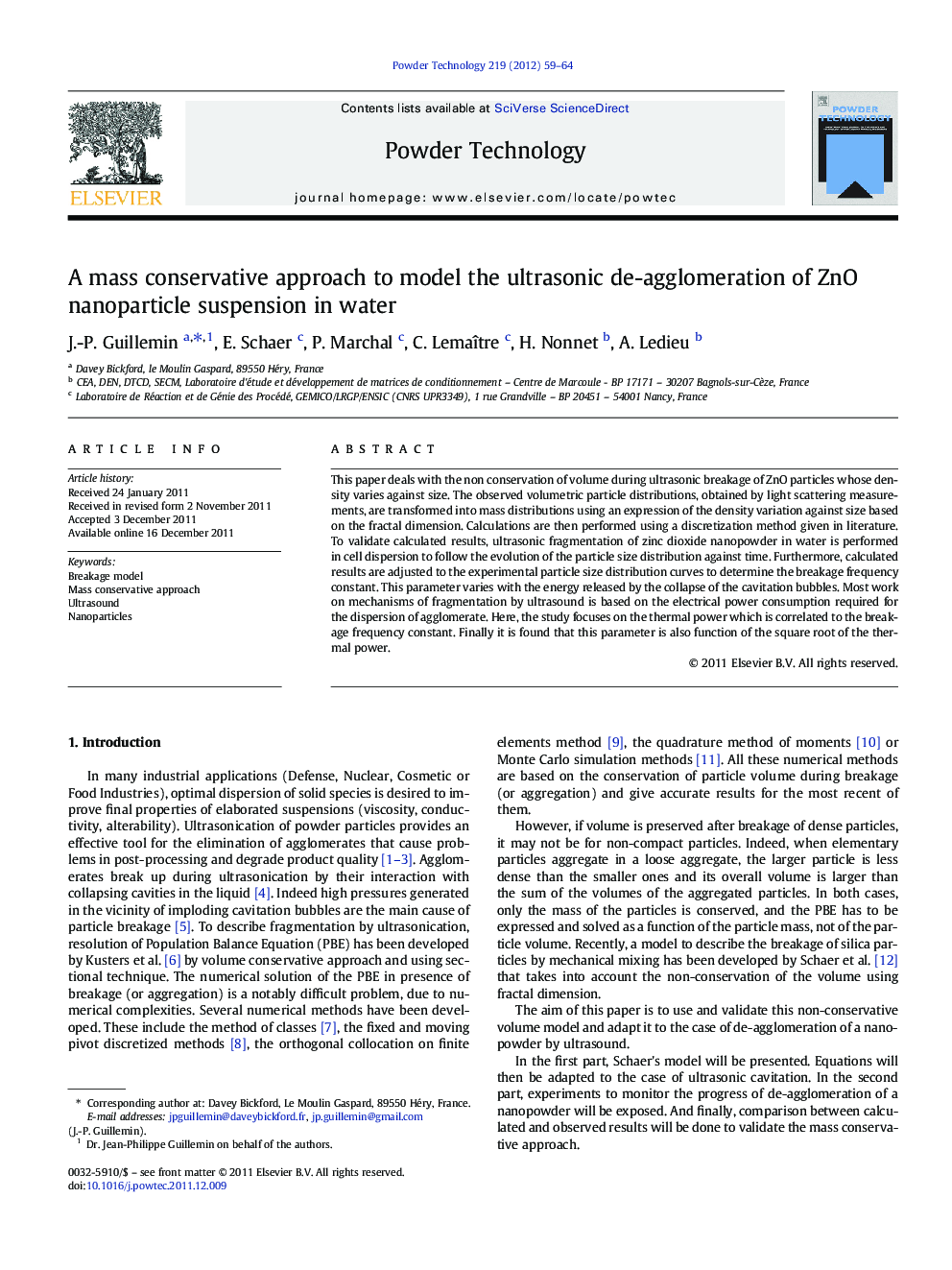| Article ID | Journal | Published Year | Pages | File Type |
|---|---|---|---|---|
| 237386 | Powder Technology | 2012 | 6 Pages |
This paper deals with the non conservation of volume during ultrasonic breakage of ZnO particles whose density varies against size. The observed volumetric particle distributions, obtained by light scattering measurements, are transformed into mass distributions using an expression of the density variation against size based on the fractal dimension. Calculations are then performed using a discretization method given in literature. To validate calculated results, ultrasonic fragmentation of zinc dioxide nanopowder in water is performed in cell dispersion to follow the evolution of the particle size distribution against time. Furthermore, calculated results are adjusted to the experimental particle size distribution curves to determine the breakage frequency constant. This parameter varies with the energy released by the collapse of the cavitation bubbles. Most work on mechanisms of fragmentation by ultrasound is based on the electrical power consumption required for the dispersion of agglomerate. Here, the study focuses on the thermal power which is correlated to the breakage frequency constant. Finally it is found that this parameter is also function of the square root of the thermal power.
Graphical AbstractFigure optionsDownload full-size imageDownload as PowerPoint slideHighlights► Mass instead of volume conservative approach to model de-agglomeration. ► Validation of the theory on nanoparticles suspension. ► Relation between thermal power and breakage frequency.
